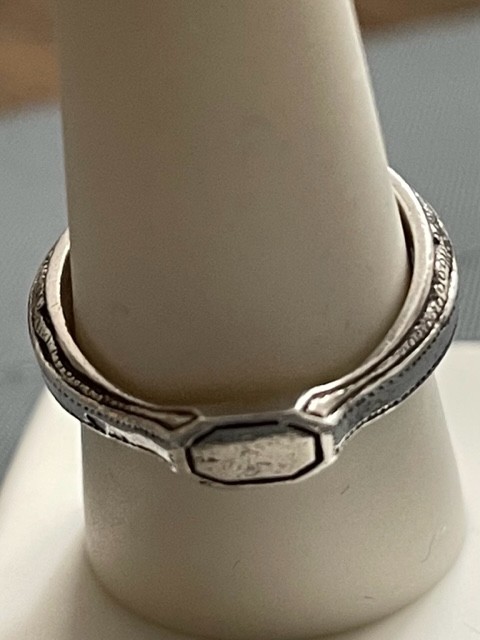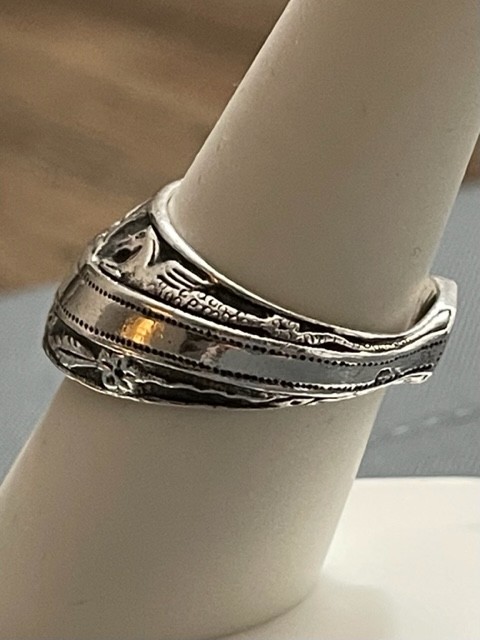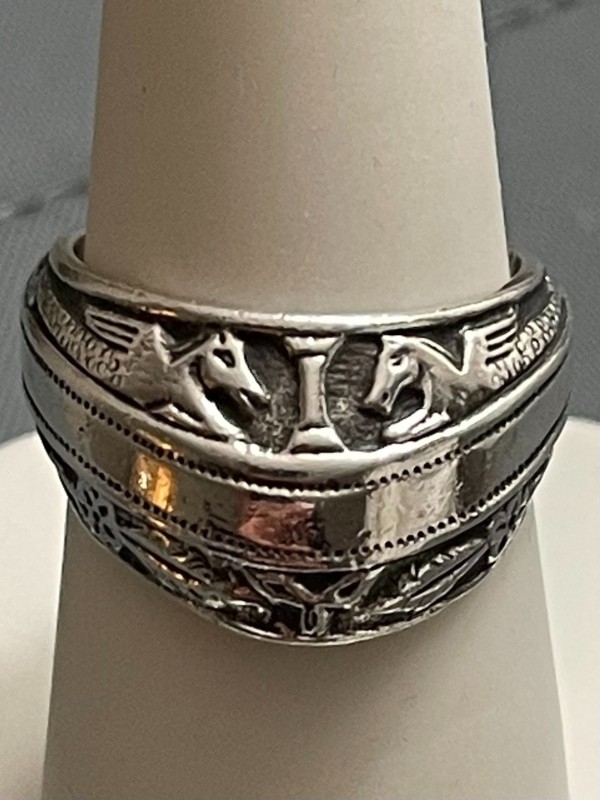Leaderboard
Popular Content
Showing content with the highest reputation on 03/30/2023 in all areas
-
I gave my original 1991 Whites Eagle spectrum to my second oldest grandson 25 years old a week ago. Memory is some thing that needs prompting at my old age, required to get by or great/dreadful/survival memories that are easily remembered. He has gone out and brought the accessories coin shovel, pin-pointer and detector harness as soon as he could with no input from me, but his choice was not too bad. As I was given the detector by the wife of my boss who I showed my methods of chasing gold in the 1980 to 1999 (he was the Charge Engineer at a 1500 Megawatt Power station where I worked) when he died 20 years ago. At that time gold in West Aust. was more important that learning his detector. So far my grandson has been air-rating his dad lawn 🤣 that is completely full of junk that it is hard to find a square foot of area of no junk. So far he has got a few coins (including a USA 1 cent and I got a Canada 5¢ coin) and a lot of their broken small cars and othertoys. How ever he played with the setting before he went to a beach and found he could get only a inch or two on coins. When I tried to adjust the setting I manage to pick up the Canada coin at 6" which was a great improvement on his setting. He has seen most of my coin and gold finds he thinks this OLD granddad is an expert and knows how to set it up better than him. This resulted in me doing some research on vintage detectors to find what I was dealing with. Anyhow I found this article that might interest/revoke memory of you guys. Are Old Metal Detectors as Good as the New Ones? .......Souce LINK.......6 points
-
Yeah, Fisher existed for over 20 years before Garrett even got into business in the 50s. Metal detecting technology became mature around 1990, especially VLF. Anything made since then is still halfway decent. For point of reference, the 50 kHz White’s Goldmaster II came out in 1990 (15 - 19 kHz was standard before that), and the Minelab SD 2000 in 1995. But from 1960 until 1990 huge advances were being made on a regular basis, and I’m talking just basics like ground balance, and discrimination. There are a few interesting models from the 1980s, like the 19 kHz Gold Bug in 1986, but most models made before 1990 are dinosaurs by todays standards. For a look at the state of the art in 1990, see this 1990 White’s catalog. White’s at the time was making cutting edge product, second to none really, including the first digital models from any manufacturer. People would be surprised if they ran a Goldmaster 2 against any of the current crop of VLF nugget detectors… very little has changed there in 30 years! The coin detectors from Compass, Fisher, Garrett, Tesoro, and White’s were also pretty decent, though nothing like modern multifrequency existed. PI nugget detecting did not exist yet either, and despite early efforts from Eric Foster it was not until Minelab came along in the latter half of the decade with the SD series that things really happened there.6 points
-
Two years ago, I found what I thought was my first musket ball on property near the road along which the Minutemen of my town march to join the Battle of Lexington and Concord. I was absolutely ecstatic. This was my first properly old find, History with a capital H, history I could touch! I imagined the last person to have handled this ball before me: knee breeches, buckled shoes – a tricorn hat, for sure! It didn't bother me that the ball was much too small for an 18th century musket (maybe it was made for a pistol), nor that balls like this had been in use for a hundred years before and after that fateful April morning in 1775. For the last two years, this ball had pride of place in my collection. But recently I returned to the spot, now a much more seasoned detectorist with better equipment and a more critical mindset. I found three more balls right away. I returned the next day and found five more, all very shallow finds, almost at the surface. A few inches beneath the balls, I found a toy car made in 1955. This was puzzling. None of the balls had been shot from a gun, though some were clearly damaged by hitting something. Most didn't have the thick, white-brown patina that lead acquires after centuries in the ground. They were all grouped fairly close together on a steep slope, behind a subdivision built in the early sixties. The toy car was buried deeper in undisturbed ground, and therefore predated any of them. Then it dawned on me. These weren't musket balls at all. They were projectiles for a slingshot! Most likely from the sixties or seventies, a time when it was perfectly acceptable for kids to shoot their eyes out with weapons that flung toxic lead balls! I knew this because I had been a 70s kid, and ten-year old me had coveted a slingshot just like this. So here, some kid had set up a plinking range and was flinging lead balls at cans, perhaps, with many balls burying themselves in the slope behind the target. Ugh, what a disappointment at first! But in the end, I was mostly happy that I figured out the puzzle. In fact, I think it makes a better story. One that illustrates why archeology is all about context, and how objects without context are almost always meaningless – something all metal detectorists should keep in mind! Of course it helps that I've found some real musket balls in the meantime, though not at the Battle Road. They are the larger balls at the top of the picture. These unfired balls were almost certainly dropped by hunters. But who knows – perhaps some of those hunters were also Minutemen?5 points
-
May 21 2002 Part Five After several tries we eventually found the second cache of gold which contained 20 ounces. It was buried several feet beneath the surface under a large, flat stone which we had to move. Now there was still one more cache remaining. Jacob said we needed to hike to the north about a quarter mile where we would come upon an old logging road that headed west up the mountain. He said this was the road the logging rif raf crews used back in the day when they made their way down the mountain to head south past the old mining crews camp to get to the main road. Jacob sure had a bad opinion of loggers for some reason but I didn’t want to get him started on another story. It was now early afternoon and we wanted to find the last of the gold today. When we came to the old road Jacob let out a hoot. He said we won’t be running into any rif raf logging crews up here today. We could see that the road had been abandoned for years. He said to start following it up the mountain and we slowly made our way west. I asked him how far and he said we would eventually come across three large boulders on the north side of what was now a rough trail. He said it wasn’t too far. After about half an hour Jacob spotted the rocks. He gave a holler and threw his hat in the air. He said to follow him over to the boulders. TO BE CONTINUED ...............5 points
-
Hey Everyone, Just wanted to share some of my thoughts/experience with the Axiom so far. Iv got about 14 hrs on it here in AZ. I was on the fence between buying the 6000 or the Axiom ever since the minelab sale.... Tough decision as the feedback on the Axiom is still pretty slim but very promising. Well I got out last weekend and it was a perfect day for testing in my most familiar ground where i usually swing an SDC or 4500. It was windy and the EMI was in full force. There was also some recent rain which had soaked the thick red clay in many areas. So yeah, perfectly hot and variable ground and EMI up the wazoo... Usually this combination will make me choose the 4500 in enhance/quiet tuned down a bit and not even bother with the SDC if the EMI is too bad. I fired up the Axiom for the first time and went through all the settings. In order to get it running quiet in this setting (11"mono) I landed on using normal at sensitivity of 3. In fine mode the wet red clay was too much to balance in any setting higher than 2 In Normal mode both the horrible EMI and ground was mellow enough to run it at 3. At 2 it was close to silent which was great but I did not trust it to find small pieces yet. Within about 15 mins i popped out a .16 g on a hillside! yay, ok it works! So the rest of the day i had a really fun time going Veerrryyy slow, digging every sound, playing with the settings as I went along. Im so used to the sound of my minelabs with the sun ray headphones that it took alot of adjusting the audio tone/threshold/volume and some time to get used to the slightly different character of the Axiom. I did use the WR-1 with my sunrays (thanks for that tip Steve) but it was still a little strange... What I noticed right off was if there was an adjustment to the sensitivity, then the quality of the threshold sound changed. As well it seemed if the threshold was turned up a bit somewhere around 16-18 and the volume was just right, there was a sweet spot where the target sounds seemed to be most clear to my ears. I am curious what other people are experiencing with the Axioms audio and threshold, please chime in! So I kept changing the volume of the machine, the WR-1 module, and the headphones, the sensitivity, and the threshold and there is alot of variation in the quality of sound between settings. Another thing about the threshold was a kind of clipped/echo kind of break when a small/faint or deep target was gone over....almost like when using my equinox with some of the numbers blocked or tuning down the the 4500 threshold way down. I tried adjusting the the threshold higher than 19-20 but it blocked out too much of the target sounds. I had a difficult time getting the volume/threshold/sensitivity just right. I did not try the speaker yet. Ground balance: I did not use the ground tracking at all yet. I found I had to ground balance quite a bit more actively in this variable ground. (compared to 4500) Hot wet clay-dry hillside- hot rocks etc.. but I really like being able to balance out the hot rocks, very handy feature.. again im so new to this machine i know nothing yet. So far so good! Got out the next day to another location. Very little wind/emi, dryer (mostly) ground. lots of ironstone, blacksand, hot rocks, lots of variable hot spots etc. No wind so I happily used the speaker which is great. So this day i was able to use Fine mode but only at about 3 sensitivity. Emi and ground were too erratic and i wanted to get more time in and find more targets to understand more of how this detector works before I try cranking it up too much (again, great advice from Steve on this) I found a couple of faint targets and changed all the settings up and down before digging. In Fine, the small targets sounded off clear, in Normal not so much. I tried cranking up the sensitivity in Normal but it only helped a wee bit. Fine was better for sure even at a setting of 2. At setting of 1 sensitivity the targets were too faint but it sure was quiet! dug up the two targets and gold yay! smallest weighs in at .06 g Im very happy about this👍 I did scrape down to bedrock in the area and went over it with the NOX and didnt find any other targets... Ended up finding a couple sitting ducks, one next to someones dig hole (so sorry) and one about 6ft away. biggest was .4g and was a screamer, thought for sure it was a bullet at first' So, iv only got about 14hrs on the AXIOM but I am diggin it so far! I tried the ground tracking in slow, which seemed to work well on the variable wet/dry ironstone nature of the area. I cant remember if i was using it when I found the tiniest piece. but did find a shotgun bb while using it so it did not track it out. and I dont remember hitting any hot rocks while using it in this area... Geeesh, i didnt mean to go on such a ramble but im trying to share as much as i can to help anyone who is considering trying out this machine. I know I was skeptical but the reports have been really intriguing. Price point, ergonomics, new variables to play with. My only concern so far is durability. It seems well made though only time will tell. I am so far very pleased with my purchase (thanks to a member here!) I do not think it compares to either my SDC or 4500... its somewhere in the middle I think. And with only using the 11" mono so far, im excited to try the other coils. Another observation is the coil is nice and hot on those squared off corners, it really is a bit different than most elipticals. As well the shape of it helps the whole machine stay upright when you set it down, and thats a nice touch. Another nice feature is the layout of the settings buttons. easy to adjust all settings quickly. I was pleasantly surprised how much I like it. I kept treating the detector like my NOX, and kept accidentally trying to turn it off on the side of the screen, which was funny.. and a nod to how light it is.. Anyway, hope theres at lest a helpful nugget in all that somewhere... Id love to hear what others are experiencing with the audio settings especially the threshold and sensitivity variables..5 points
-
When you look at the fully submersible Xterra Pro at $269 then even $299 would be a stretch for a new F19 variant. I honestly don’t see how Fisher or Garrett can sell hardly anything at current prices when caught in the crossfire between Nokta and Minelab. It has to be brand name loyalty or simply not knowing to lay out $759 for a new AT Max, to pick just one of many examples.4 points
-
As a dealer for 25 yrs, I would have never expected to be in this situation. It drives me crazy as my customers who've been loyal for so long...I have no answers for them? My list is shrinking each day as customers find them from other sources. I'm ok with that...as a detectorist, I understand the desire to use the next best tool (detector). I have noticed an uptick in my Deus-II sales as well. As for the military discount a select few dealers offer. Those sales, are a partial loss of profit for both the dealer and the manufacture. The manufacture only gives a partial credit (towards more detector purchases). In the end, the dealer and manufacture both make a little less money. We all make mistakes and hopefully lessons will be learned and down the road, things will get better.4 points
-
Despite living in a very rural place, my bank has a coin counter because of the coin shortage. It has a hopper that they can dump a whole jug of coins in, and they will automatically deposit the funds in your account. All I do is tumble them, they will take the most corroded Zincolns and give you credit for them. Look around for a bank with one! Make sure you go when they're not too busy. There is no charge for this if it is your bank.4 points
-
That is about the same size as my single largest gold specimen find, but I only got 16+ oz gold. I suspect his detector was better (Is the right Gerry) . No it not, there is more contaminates of GOLD in his, lucky bugger. If I add the extra weight of gold ( it showed a lot more when broken up) it looks about right for the volume. How could you sell mine for it true value without smashing it up and melting it.4 points
-
I use a large Lortone tumbler with aquarium gravel. The drum is about the size of a gallon paint can. My clad gets completely clean but remains discolored, After tumbling, I pour the clad and gravel mix onto a screen and hose it down. Once everything is dry, I sort it out with a beach scoop.4 points
-
I am able to tumble beach coins with sand and soft scrub with bleach and use 90% of my quarters, nickels and dimes. Our quarters go into a laundry machine and the nickels and dimes go into Coin Star. We opt for the Amazon certificate and that makes 100% available for purchase. Pennies ... we have pounds of pennies. They get separated into shields vs copper. Shields are being saved for taking to a Federal Reserve Bank that will exchange them for spendable money. I haven't found one but that will be the next step. The law says it is still money. No one will count them so it will be a pound exchange and an estimate of value.4 points
-
4 points
-
4 points
-
I still have a Eagle 2 SL 90 like the one on that catalog cover. What a great machine that was when it came out. It's still a great machine for land hunting if the targets are 8" or shallower. It was pretty worthless at a salt water beach in the wet sand or water though. The 6000 DI Pro machine was no slouch either. IMO the best of the analog all-around machines.3 points
-
https://www.lindquistmortuary.com/obituaries/monte-berry3 points
-
It’s sad not to know the greatest of someone until after they’ve gone. I wish I could express in words to ease the pain and the loss of their love one but I don’t believe that exist for anyone that has so much love for each other in a family. We pass this way but one time and I hope we too will be remembered equally as well. Chuck3 points
-
3 points
-
It has been a while since I've found much clad but back 15 or 20 years ago, I used to tumble or just wash it in a strainer in the sink, then take it to the nearest Coinstar. I discovered that if you keep putting the rejected coins back through the machine, it eventually takes all but the severely damaged ones. The Amazon certificate is the way to go. I rarely find clad these days even at the beach. Nobody carries coins anymore.3 points
-
Hello all...yes you can technically go back to older versions BUT we highly recommend all to use the latest one as the features added are really worth the try!3 points
-
Sorry I haven’t been posting lately — still dealing with a few health issues so that has been eating into my detecting time. Looks like we are still waiting for an update don’t know what’s more painful the kidney stone or the wait for the update. Gotta poke a lil fun. I will say though my wife smoked me the other day on multiple targets with her new Manticore with the Minelab stock Park program. Keep in mind no adjustments were made to the program the machine was only ground balanced. This is right out of the box except for the initial charge when it arrived the day before. My D2 11 inch coil had a hard time with seeing the same targets she located. This was before the targets were unearthed and I tried multiple XP stock programs to see if that made a difference - not really. Guess I need the update. Attached is the small 14k gold locket she found. I had a very hard time hearing the gold locket before it was unearthed. She also found several small earrings and a ring deep that I could not really see. Makes me wonder.3 points
-
Actually I didn't really know it was a ear wax removal tool , I just thought to myself when I saw it that it should work well for removing ear wax with it being as small as it is and having the grooves on the end and then did a search and found that kit with that tool in it, sometimes one gets it right with a lucky guess!!!3 points
-
Ear Wax removal tool, usually part of a set. https://www.miniinthebox.com/en/p/leather-suit-ear-pick-set-ear-pick-portable-ear-pick-ear-picker-earwax-adult-ear-pick_p9438142.html?currency=USD&litb_from=bing_shopping&sku=2_123827&country_code=us&utm_source=bingshopping&utm_medium=cpc&utm_campaign=bingshopping&msclkid=01fd42746bb41d1f860c26506d26be553 points
-
Field Test: Garrett Axiom By Bill Paxton For those of you who are frequent readers of Western and Eastern Treasures, you may recall back in December of 2021 I did a field test on the Garrett 24K Goldmaster metal detector. An excellent VLF gold machine, the 24K was Garrett’s rebranding of the White’s 24K Goldmaster and a perfect legacy choice to honor the White’s brand that they had acquired in October of 2020. Since the 24K Goldmaster was not a Garrett-developed product, I was very curious as to what Garrett had in the works for 2022. While their competitors were literally leapfrogging each other in the hobby market, Garret was curiously quiet. What were they up to I wondered? A new detector based on the Multi-Flex technology they had introduced in the Apex? Maybe a new water machine? The months ticked by. Still Garrett was quiet. Then came October 5, 2022. That was the day that Garrett revealed to the metal detecting community that their company was all in when it came to one thing. Gold. The 24K Goldmaster was a precursor of things to come. Or to be more specific, one amazing thing to come. The Garrett Axiom. A complete from the ground up redesign of pure pulse induction technology in a package unlike anything that had ever been seen before in the gold prospecting niche of our hobby. Gone were the bulky rigs that required harnesses to swing them and car-size batteries to supply power. No more annoying nobs and confusing settings. What Garrett delivered was a genuinely new and yes, I’m going to say it, exciting metal detector. The first pictures of the Axiom looked like something out of the space age. This was a detector that I wanted to try out and I’m not even a gold prospector. When Steve Moore, the Director of Marketing for Garrett, emailed me and asked if I would like to try one out I couldn’t type the word “YES!” fast enough. Let me pause here briefly and give you a bit of a spoiler alert regarding this field test. As you can tell from the introduction I’ve written above, the Axiom got me pretty revved up even before I held one in my hand. I have used it in the gold fields and at the beach and it flat out delivers. This metal detector is a game changer and I’m genuinely excited to share this field test with our loyal readers. With that being said, let’s get to the field test. The Garrett Axiom The Garrett Axiom There is a great deal to cover on the Axiom beginning with its design. As you can see from the photos, when I describe the Axiom as looking like “something out of the space age” I wasn’t kidding. I’ve used PI detectors for many years, primarily to hunt saltwater beaches because of their inherent ability to deal with high mineralization and find targets at extreme depth. They did, and do, work but at a cost. Due to their often bulky designs, they can beat you up physically. Walking on a beach for several hours with one of those beasts takes its toll and the fatigue factor inevitably shortens your hunts. The Axiom completely negates that negative aspect by its well-balanced and relatively lightweight design. It comes in at roughly 4.5 lbs. depending on the coil you select and features a lightweight internal lithium battery encased in a molded plastic case. An open flexible and very comfortable arm cuff is mounted on the rear of the detector and can be adjusted if required. The hand grip is easy to grasp and topped by a control box modeled after the Apex. A slick carbon fiber shaft that uses innovative stem clamps for adjustment connects to a variety of lightweight coils. All of this means just one thing: you can swing this detector for hours and not suffer for it in the least. One more thing. When you are transporting the Axiom, or if you wish to shrink it down to hunt in close quarters, it easily collapses to a remarkable 25”. The stem clams work as promised and save you the hassle of pushing in those annoying little spring buttons every time that you adjust the shaft. The Axiom Package The Axiom Package Garrett provides a very impressive package of accessories with the Axiom. Along with the detector and searchcoil (this can vary by the package selected), you get: Axiom Booster Pack Soft Carry Case Quick Start Guide Warranty Card USB Charging Cable Wall Charger and Adaptors A set of MS-3 Wireless Headphones with charging cable (Yes, you get Z-Lynk with the Axiom!) A small gripe is that a copy of the full owner’s manual is only available online. I really like a printed copy for reference and wish that one was included. Axiom Coils Garrett offers a large selection of coils for the Axiom: 11” X 7” Mono AND DD 13” X 11” Mono AND DD 16” X 14” Mono AND DD Okay, you are probably thinking that the above listing of DD coils for the Axiom are typos. I can assure you they are not. Yes, Garrett has chosen to offer DD coils for the Axiom. For many PI purists this may be heresy since Mono coils have been the standard for PI detectors for many years. However, I can tell you that the DD coils are a great way to go. My test unit came with a 13” X 11” DD coil, along with Mono coils in the other two sizes. Unlike the Mono coils, which are hotter on the edges, the DD coils react to a target like a typical DD coil and are hotter toward the middle of the coil. I personally loved this because I hunt 100% of the time with DD coils on my other detectors and it made for a very easy and intuitive switchover to the Axiom. In comparing it to the mono coils I found no loss in either depth or sensitivity and the DD coil is now my coil of choice. I would not discount a DD if you are looking into purchasing an Axiom. Axiom Power Okay, say this with me. “Ahhhh.” That is what you will say when you pick up an Axiom and see that there is not any bulky battery to deal with. The detector is powered by what Garrett describes as a “2X LIFE” built-in, high-capacity lithium-ion battery that will run 16 hours on a full charge. I can confirm that the battery is exceptional in terms of holding a charge. While I didn’t hunt for 16 hours straight, I did numerous back-to-back hunts totaling over 10 hours each time and the detector always had two bars remaining on the charge indicator. For those of you who just want to play it safe, a separate booster pack battery powered by 8 – AA batteries is included that will supply an additional six hours of hunting time. Axiom Display Panel When Garrett introduced its first multi-frequency metal, the Apex, it featured a brand-new control box design that users instantly embraced. I was very happy to see that Garrett chose to utilize this same design for the Axiom. The display screen features fifteen different elements in a neatly uncluttered arrangement: Signal Strength Indicator Iron Check Mode Frequency Scan Tone Audio Type Sensitivity Battery Level Speed Ground Track Backlight Wireless Headphones Ground Balance Arrows Ground Balance Indicator Ground Balance Values These display elements will be discussed in detail where relevant later in this field test. Axiom Controls Axiom Controls As with the Apex, the six controls on the display box are located in a unique, user friendly “thumb wheel” pattern below the display. All operations and adjustments to the Axiom are easily accomplished by moving your thumb from left to right in order to press the appropriate button. The controls are: 1. Power ON/OFF and Operate a. Used to turn the Axiom on and off. Pressing and holding this button for five seconds restores factory settings. This button also can be tapped to exit the MENU settings. 2. Volume Plus/Minus Buttons a. Used to increase/decrease volume. 3. Sensitivity Plus/Minus Buttons a. Used for two functions. i. To adjust the sensitivity of the detector. ii. To adjust detector settings within the Menu settings. 4. Menu/Iron Check a. Used for two functions: i. Used to access Menu settings. ii. Engaging Iron Check function by pressing and holding this button. b. Ground Balance i. Press and hold this button to ground balance the detector. 5. Threshold Plus/Minus Buttons a. Really handy to increase or decrease the threshold on the fly as opposed to have to go into some sort of annoying settings menu. 6. Ground Balance a. A “hold and bob the coil” button for ground balancing the Axiom. With all the aforementioned features and controls you might think that the Axiom is a complicated detector to run. On the contrary, Garrett really took its time in designing the Axiom to both offer many features AND be easy to operate. After spending many hours in the field with my Axiom I can attest to this. Axiom Functions and Settings Accessing the various functions and settings is extremely intuitive. · How many times have you owned a detector that needed a factory reset and you couldn’t figure out how to do it? Not with Axiom. Press and hold the Power button for five seconds. Listen for a double beep. Done. · Frequency Scan o EMI is a constant enemy a detectorist must battle so frequency scan is a must with today’s modern metal detectors. The Axiom uses a unique system to locate the quietest operating frequency. To perform a Frequency Scan, just push the menu button until FREQSCAN is highlighted, then press the plus button. The Axion scans through 100 frequencies, rechecks the best five and automatically selects the best one. All of this in 45 seconds. This worked flawlessly for me in the field. · Detection Modes o In my humble opinion this is the Axiom’s finest feature. The Axiom provides four search mode operations, each optimized for specific types of detecting. 1. Fine Mode · The preferred search mode of the Axiom, Fine Mode offers the best sensitivity to all sized targets ranging from fine gold to large items. Fine Mode can be susceptible to ground minerals, hot rocks and salt water. 2. Normal Mode · An excellent choice if noise issues are encountered when in Fine Mode. Normal mode provides good sensitivity to most targets but can be less effective on fine gold. 3. Large Mode · For use when focusing on large targets. This mode also reduces susceptibility to hot rocks and highly mineralized ground. 4. Salt Mode · Designed to allow for use of the Axiom in wet salt environments like ocean beaches. As an avid beach hunter, I was particularly interested in how this mode performed. It delivered excellent stability even in high concentrations of black sand. o Accessing the modes was a sinch. Just press the MENU button until the word “MODE” is highlighted. Then press the “PLUS” or “MINUS“ buttons to select the mode. · Volume and Threshold Adjustment o Not much to say here. Super easy to adjust with the PLUS/MINUS buttons. · Tone and Audio Options o Another area where the Axiom shines. Via the Menu button, the user can change the audio pitch and select from two different types of audio. 1. Tone Adjustment · Pushing the Menu button until TONE is selected followed by pressing the +/- buttons allows for scrolling through 100 available tone shifts. o This feature allows the operator to pick a tone that best fits their preferences or hearing ability · Only active with VCO audio (Audio 01) o Audio type 1. The Axiom has two different and very unique audio types, Audio 00 (PWM) and Audio 01 (VCO, also default). These can be accessed by pressing the Menu button followed by the +/- buttons. Both provide continuous audio that responds proportionally to a target’s signal strength allowing the operator to judge a target’s size, depth and shape. · Audio 00 (PWM) o In PWM audio, audio pitch is fixed at either high or low and only the target’s volume increases with signal strength. Preferred by users who like an active, coarse audio response. 1. Audio 01 (VCO Audio) o The preferred mode of most users (including yours truly). Target volume and audio increase proportionately with signal strength and is a real asset in locating faint targets by changes in audio pitch. o Target Signal 1. The Axiom features a Target Signal Strength Indicator at the top of the display. Utilizing a bargraph, the indicator will display high tones proportionally toward the right of center and low tones similarly toward the left of center. · Backlight o The backlight can be activated and adjusted via the Menu button by highlighting the backlight icon. o The backlight automatically activates when scrolling through the menu, a very handy feature. · Speed o A crucial adjustment for your hunting, made easy by the Axiom’s defined speeds of SLOW, MED(IUM) and FAST. This adjustment determines coil sweep speed and also target recovery speed (often referred to as “reactivity). o As with every adjustment on the Axiom, the Menu button gets you to the Speed Settings. The operator needs to pay strict attention to choosing the proper setting in order to ensure the Axiom performs at its best. 1. SLOW · While the manual suggests using the MED setting for general purpose hunting my preference was the SLOW speed. This setting was the most stable of all three and provided excellent depth and sensitivity. However, it is vital that the user sweep slowly. I always ask the question of fast sweepers “what’s your hurry?” In the case of the Axiom, go slow and you will be rewarded. 2. MED(IUM) · The default setting and a good general-purpose selection for most users. It provides good sensitivity and depth and requires a moderate sweep speed. 3. FAST · This speed boosts reactivity to increase target separation but that comes at a cost. EMI and noise chatter can increase making it more difficult to hear faint targets. · Sensitivity o Unlike most metal detectors, the Axiom offers what I would refer to as “sensitivity on steroids.’ While many metal detectors can be run hot at max sensitivity, the Axiom for the most part cannot. Prior to its release, the previous maximum sensitivity of “8” was boosted significantly to allow certain skilled operators in unique hunting situations to push performance to the maximum. The previous maximum sensitivity now is the number 4 selection. For almost all users (including this field tester), 4 provides more than enough power to obtain excellent results from the Axiom and should not be exceeded for general hunting. · Ground Balance o The Axiom features a very sophisticated ground balancing system that is covered in detail in the manual. While offering standard options like manual ground balance and ground tracking, the Axiom has taken ground balancing to another level with several innovations not previously seen on PI metal detectors: 1. Dual ground balance values displayed with both ground tracking on AND off. · This is a terrific visual reference to monitor ground conditions. 2. Ground Balance Window Feature · After ten seconds of ground balancing, the Ground Balance Window activates and allows the operator to eliminate both mineralized soil AND a hot rock. Pumping over the soil and scanning over the hot rock will eliminate both responses (or make them much smaller). · Iron Check o One of the coolest innovations included in the Axiom. Iron check, which only works with DD coils, will generate an iron “buzz” that is easily recognized. To activate this feature just hold down the Iron Check button until it double beeps. Then scan and listen to the buzz. o While this feature worked best on shallow targets, I found it to be a huge asset for both gold prospecting and beach hunting. If I had a deep, small target all I had to do was activate Iron Check and then scan the pile to see if it was iron or not. This was a real time saver and I used it a lot in my testing. · Quickstart and Owner’s Manual o A Quickstart guide is included with that Axiom. The owner’s manual, which is very well written, is only available as a downloadable pdf. · Other references. o Once again Garrett smartly brought in renowned gold hunter Steve Hershbach to host a series of “how-to” videos explaining the Axiom and its use in great detail. Steve’s easy-going manner and excellent on camera skills, combined with his in-depth knowledge of electronic prospecting, make these videos a must see for anyone contemplating the purchase of an Axiom. I found myself going back to them many times and even after learning the Axiom found they served as a huge, free database of knowledge that made me a more skilled operator of the detector. And now on to the field test… Field Test Historically PI detectors have been at their best when it comes to gold prospecting and saltwater beach hunting. These were the two areas that I focused on for my field testing. But before we get to that, let me comment on one aspect of the Axiom that deserves more than just a passing reference. What is that aspect? Its design. I don’t mean anything specific because to focus on just one feature would be unfair. This detector is flat out one of the best designed metal detectors that I have ever had the pleasure of using. The more that I use it the more I appreciate the time that Garrett put into its design. Notice I said “more that I use it.” Having been a field tester of metal detectors for over two decades I can tell you that this is not always the case. I have never tested what I would call a “bad” detector, but on occasion certain detectors take a toll on you just to use them. For example, the grip angle is wrong. Or the balance is off. Or the menus are confusing. Not with the Axiom. Its performance was excellent as you will see shortly. But what really continues to make my day is that the Axiom is just an easy and enjoyable detector to hunt with. Now let’s get to that field test. In the Gold Fields Living in Los Angeles it is difficult to prospect for gold regardless of your method. Getting to areas to look for gold that isn’t in the form of jewelry is especially difficult, although there are certain places where you might have success that are relatively nearby. However, in my mind I wanted to really prospect for gold with the Axiom so I decided to focus on a place you might have heard of: the Mojave Desert. A few hours’ drive from Los Angeles, this massive area holds many gold claims and a ton of history. Through a fellow detectorist I was able to gain access to a mining claim that was known to still be producing gold. Six buddies and I piled into two pickup trucks and we headed out to the desert to make our fortune on a clear Friday morning. Our detecting site, high up in the Mojave Desert Mountains The site we came upon was several miles up in the hills and showed clear evidence of mining activity. Tiling piles were everywhere. We parked and unloaded out detectors. FYI, I had the only pulse machine; my buddies had both multi-frequency units and VLF’s. After having studied Steve Herschbach’s videos the night before (thank you again, Steve!) I felt pretty confident in my ability to run the Axiom so off I went into the land of tailings. Getting started with the Axiom was a breeze: Power up. Adjust threshold - I preferred a barely audible threshold although at times I went with a negative value to run totally silent. In both cases good targets rang through clear and solid. Ground Balance Run Frequency Scan Pair MS-3 Wireless Headphones (optional) - Being out by myself I liked using the speaker but if noise is an issue the MS-3 Wireless Headphones are excellent. Select Detection Mode - I ran Fine Mode exclusively and was very impressed with its sensitivity to all sizes of targets. In the area I was hunting there was no need to utilize either Normal or Large Mode. Go! Over the course of the next six hours, I covered a lot of ground with the Axiom. Targets were few but when there was something there, large or small, the Axiom found it. I really liked the Iron Reject feature in that it allowed me to locate and ignore several tiny ferrous targets in the pile once they were removed from the hole. Having never prospected for gold with a metal detector for this long a period of time I was grateful for the Axiom’s user-friendly design. The main reason? Gold prospecting is hard work! The constant digging in rock hard ground with a pickaxe kicked my butt. The author working a hillside with the Garrett Axiom For those of you who aren’t PI users, there is an audio adjustment that you have to make when using a PI in order to recognize targets. I would strongly urge you to test targets at home before going out in the field. Thankfully I did this and therefore was able for the most part to locate targets easily. Using the DD coil really helped and I was able to use my VLF skills to center and pinpoint targets with very little difficulty. The Axiom found targets of various sizes that included shell casings, bullets, wire, iron junk (ID’d easily by Iron Reject when in the pile), everything but gold. As those of you who prospect for gold know all too well, gold is tough to find and on this day I did not come home with any. The Axiom will find even the tiniest piece of gold as was evidenced by several microscopic bits of wire that hit hard with good, solid repeatable signals. The Axiom was sensitive to both large and very small targets in the heavily worked area. The irony of the day was that one of our party did find gold and he was the only guy who did not use a metal detector. He filled up two large buckets with dirt to take home and pan out and yes, he had gold in his pan when he was all finished. At the Ocean Beach As an avid beach hunter living in Southern California I was really anxious to see how the Axiom performed in a salt environment. Until the advent of multi-frequency detectors, PI’s ruled when it came to depth and performance at ocean beaches. Nowadays you don’t see a lot of PI’s at the beach but they do still have their place when the mineralization is high and causes problems for conventional detectors. There are still PI purists who will argue that a PI can beat any detector for pure depth and they may be right. I had no intention of reopening that debate. All I wanted to do was see if the Axiom could serve as a beach hunting detector. The Axiom was rock solid at ocean beaches and delivered exceptional depth on targets. A long-buried silver ring with an onyx stone was found with the Axiom after a recent storm. The verdict: yes, it can. Thanks to the SALT mode, a beach hunter can easily navigate “the wet” as we call it and punch right through troublesome black sand. In my hunts at the beach I was very pleased with how smoothly the Axiom ran. I could push the sensitivity up to “6” before I had to deal with any falsing. Targets were recovered at impressive depths of well over a foot. Being a PI, some of these were deep garbage but others were coins. That is the compromise you make when hunting with a PI. My best find was a very old, large silver ring, found at a depth of about 6” in a pocket of black sand. The Axiom hit it with no problem. I might add that the Axiom’s relatively light weight and excellent ergonomics made for easy, fatigue-free hunting, something that I have not found to be true of other bulky PI’s that I have used in the past. Another type of beach gold hunting is one that few detectorists explore, that being microgold hunting. For those of you who aren’t familiar with micro-gold hunting, it involves searching for those tiny pieces of gold that VLF metal detectors can’t find. Items like earring backs, thin chains, gold fillings, etc. Gold detectors can be used with good success when searching for microgold due to their ability to find tiny pieces of gold. This type of hunting must be done on the dry since the salt content of the wet sand will wreak havoc with these types of detectors. It requires a great deal of patience since the dry sand holds many types of small bits of metal that conventional VLF’s will not find. It is not for everyone. However, if you elect to try this type of hunting then the Axiom is a superb choice thanks to its FINE MODE. Be sure to bring your Garrett Pinpointer along because you will need it. The Axiom will hit on microscopic pieces of metal like aluminum that you will not see easily with the naked eye. I did a several hour microgold hunt at a local ocean beach and was amazed at how many small targets the Axiom located. If it had been my lucky day, I’m certain some of them would have been gold. Summary, Due to unforeseen circumstances that I will get to in a moment, I was able to spend a much longer period of time using the Axiom than normal. While its gold prospecting abilities have been well documented by many users since its release, there has not been as much focus on the detector as a general use machine, in particular at saltwater beaches where PI’s historically have always performed well. Being a beach hunter, these extra few months gave me multiple opportunities to use the Axion “in the salt” as the saying goes. Generally, I have avoided using a PI as my go-to beach detector because they can be a pain in the neck to use due to their weight, confusing adjustments (for me at least) and the requirement that you have to dig too much garbage. Not that I haven’t tried almost all of them and really tried to love them, or at least like them. The Axiom changed that for me. It is the first PI that I have ever used that was fun to hunt with and performed and felt like a normal metal detector to me. Each time I used it I came to appreciate its brilliantly designed. As a gold prospecting PI I don’t think you can match its performance and value. For saltwater beaches I found it to be a match for any detector that I encountered during my hunts, including all of the latest and greatest multi-frequency machines. If you are looking for a powerhouse saltwater beach detector don’t write of the Axiom as being just a gold prospecting detector. It is a whole lot more. I cannot recommend it more highly as a multi-use metal detector. You can learn more about the Axiom here: https://garrett.com/sport/axiom. Now let’s get to those unforeseen circumstances. This field test was requested by Garrett Electronics and was slated to be published in the January 2023 issue of Western and Eastern Treasures Magazine. I was due to deliver it for publication when the news was released that the magazine was closing its doors for good at the end of 2022. Despite all the work I had put into testing the Axiom and writing up my field test article, it just didn’t seem right for me to keep the unit. I contacted Steve Moore, Director of Marketing for Garrett Electronics, to arrange for the return of the Axiom. To my pleasant surprise, Steve insisted that I hold on to the Axiom and finish my field test in the hope we could find another method of publishing it. Enter Steve Herschbach of DetectorProspector.com Steve said he would gladly publish this field test. He also added that it would be an honor to have it be the last field test written for Western and Eastern Treasures Magazine. To say I was flattered would be an understatement. With that being said, I hope you enjoy this field test of the Garrett Axiom, the last field test written for Western and Eastern Treasures Magazine.3 points
-
May 21 2002 Part Six We got up to the site where the cache was hidden. This area looked like it hadn’t seen any human activity for many years. The old logging road was now just a rough trail. The boulders were nearly 100 feet off the trail and there were other smaller rocks all around the area. Jacob stopped and took a long look around the area as if trying to remember the exact location. He said the area had changed some and he didn’t remember all the other rocks being there. To be honest, the place looked like an old hard rock tailings dump. He said he had buried the cash on the north side of the big boulders and covered it by dragging a big flat rock over from an area about thirty feet away. Now the entire area was covered in rocks. Jacob just shook his head in disgust. He said somebody had dumped rock in this area. I asked him again how far from the big boulders he had buried the gold and he told me just ten paces or maybe thirty feet. So I tried my best to step off ten paces over the rough and uneven rock strewn area. Then the four of us started to look for a big flat rock. We worked slowly and removed as much of the rounded rock as we could and finally found a large flat stone that was too big to lift. Jacob hollered out saying that might be it. Jim got down on his knees and pushed the stone away from its resting place. Then Vern grabbed a shovel and started digging. TO BE CONTINUED ................2 points
-
There is a lot of good salesmen out there and with detectors with a solid history they can ignore the current detectors on the market and talk about the past. Fishers website has had a VERY RARE update with some wording changes to their models no longer lying about being the best detectors on the market but they've also discontinued a number of detectors, the F19 series is one of them, this will be because they were ripping people off I guess selling the F19 for an expensive price when it's also a Bounty Hunter. http://fisherlab.com/hobby/deetectors-f-series.htm#f75Ltd The only F19 models on their site say they're new, but also say they're no longer available. As for the model series itself, it's one of my favourites of the older detectors I own, it has really stable Target ID and quite accurate too, it is capable of pretty small targets, not quite suitable for me to use for prospecting as it's just not sensitive enough but decent none the less for general use being able to find small stuff. Being a detector designed for gold it's obviously going to be pretty good on gold jewellery. I repurposed mine by buying the Detech Arrow coil for it, by having an 18x4" coil on it it's absolutely perfect for going to areas after events scanning the ground for recent drops, it's very EMI resistant which makes it perfect for this as events are largely in high EMI areas. Combine that with it's accurate ID's and ability to turn the sensitivity right down and and cut the depth down it really does a good job at this. It's iron disc works well and easy to adjust, it's light and easy to swing. It pairs very well with the Detech Ultimate coil, it provides it very accurate ID's to depth and it can hold that ID until near the edge of detection of targets, it doesn't just detect with a good ID on shallow targets then go wild with deeper ones like the Simplex does. Their business model of having one model detector and disabling minor features on it to create other models no longer washes in today's market so having 4 or 5 models of the same detector with slight feature variations and different looks just doesn't work, they need to only keep their most highest spec models to stay in the game even at the lower end of the market.2 points
-
The Fisher / Teknetics / Bounty Hunter 19 kHz models were among my very favorite detectors. There was some evolution, culminating in the F19 variants, but they were all good. Simple, powerful, great all around models. They are certainly still very viable options but I have moved on personally. I’d never pay the $499 they are asking for them now. Lots of fond memories though. Fisher F19 Information Difference Between Gold Bug, F19, and G2+ Fisher Gold Bug Dp Vs Bounty Hunter Time Ranger Pro & F19 Guide To Gold Bug Versions2 points
-
According to this video the weights of the new Legend parts are: Old armrest: 101 gram New armrest: 56 gram Old middle Shaft: 104 gram New middle Shaft: 69 gram LG28: 565 gram LG30: 499 gram2 points
-
Not a bad thing to have an external battery pack system that mounts under the cuff. I think it is a bad idea to have a battery inside the control box for bunch of reasons... Noise, Heat, Difficult to replace and can't be swapped out on the field if they run out. Using a pack system allows for larger batteries with longer run times, user can swap them out in the field and better balance of the machine overall.2 points
-
OK, I haven't nitpicked in at least a couple..., weeks, err days, err, OK, hours.... The author is Michael Moore (not the documentary film-maker, if the photo at the end of the linked article is legit). His history is way off, saying Garrett (along with Fisher) were the first to produce commercial metal detectors -- not even close. George and Carl have the history of metal detector creation down pat, just another reason to own their book. I don't say that to diminish Charles Garrett's accomplishments as his influence is amazing, covering the full spectrum of detectorist/treasure hunter, designer/engineer, author, business entrepeneur, and champion of the endeavor. But there were quite a few companies that popped up in the 1960's that beat Garrett to the punch of designing, building, and marketing/selling detectors, if only by a few years or even a few months.2 points
-
Yea, second one was working fine and I did GB it when used. After dropping it, no need. I turned it on holding it in the air to make sure it still worked and it started beeping and vibrating right away and wouldn't stop. I certainly don't see a crack, even with a magnifying glass. I think it hit on the black battery cap when dropped. I only splashed it on the two hunts it worked ok. After the hunt I turned it on to make sure it worked and it did, so the drop caused the problem.2 points
-
Had you had either one in the water? I ask because I had one with a cracked housing (couldn't see the crack, but...) and it went haywire after I used it in a creek. I sent it in for repair and Garrett replaced the housing and some parts inside, too, under warranty. Came back looking like new. That was many hundreds of hours ago (warranty long expired) and the replacement now looks well worn but still ticks. I do have to take the battery out after a hunt since the LED light often stays on and runs down the battery (I use rechargeble), but as far as its performance -- as good as ever. But I don't use it underwater. However I do dunk it during cleaning every now and then. I suspect your housing cracked when you dropped it. I suppose they could argue but Garrett is known to be very accommodating to customers so I'd give them another chance. I've learned to take my pinpointers out of my pouch and off my belt before taking that stuff off as I've dropped my (irreplaceable 🙄) White's Bullseye TRX on pavement more than once. (So far, so good, though....)2 points
-
Now that's full service bank, not just lip service as such! I'm not aware that you can even go to a Federal Reserve Bank; I thought they only deal with other banks. Could be wrong, though; I am a lot. There may be a way to ship/mail in damaged coins and currency and get sent a refund check or direct deposit, but shipping might eat a large chunk of the value? Best would be for a bank or credit union to be the 'middle man' as F350's does, but cooperative organizations like that are a dying breed.2 points
-
2 points
-
Just how big are your ears, I think that Disney did a movie about some big ears once but that was with an elephant.2 points
-
2 points
-
2 points
-
As many are probably aware, based on the posting of My First Relic Hunt with the Deus II, Mary and I took a flight up to Tennessee to visit our daughter and her husband. They recently bought a house on 12 never detected acres about 45 minutes from Nashville. Beautiful mountains, rocky terrain, trees galore! Although I've had the 280 for awhile now, this is the first time I've taken it through the airport as the back pack it was designed to be. In a word, Perfection! Efficiency: First and foremost this back pack is tremendous in how much and how well it can hold all parts and pieces of the Deus II with plenty of additional pouches designed into the 280 that can hold other items of mine I'm sure XP never thought of.😉 Each section is graphically marked with the part it was designed to accommodate...an extremely helpful touch! My Deus is outfitted with the 11" coil and Steve Goss' carbon fiber shaft which is a mite longer than the factory shaft and the 280 accommodated that entire set up perfectly...and very securely. I also had my MI-6 pinpointer in its assigned compartment and thought if the TSA questioned anything as the back pack rode through the X-ray machine it would be the MI-6 because to me, it closely resembles a stick of dynamite! 😅 Just in case, I brought along the owners manual and photos from the web of all that equipment and was prepared to demonstrate their function if questioned. The TSA didn't even change their bored expression as it rode through the scanner.👌 There are two pouches on the left shoulder strap...one for the remote and a larger one behind it I'm assuming for a cell phone. Since I tend to modify everything, no matter how well designed, I used the larger one for the remote and placed a cut piece of sponge in the smaller front one which added an additional layer of protection for the face of the remote...just in case I ran into an over achiever at the TSA. Everything simply worked great and it fits very easily in the overhead compartment. Comfort: I've worn many back packs and ruck sacks in my life as you might imagine and I'm here to tell you this is by far the most comfortable one I've ever had rest on my shoulders and back. The shoulder straps are wide and very well padded...totally and easily adjustable. With the chest strap in place the shoulder straps fit securely on your shoulders and don't slip off to the sides as I've had other packs do. As the pack rests against your back, it feels like a soft but firm support and you never feel any detecting equipment poking you in the back. The belt around your waist is also wide, adjustable, well padded and very comfortable. Build Quality: The best I've seen. Heavy duty fabric, straps and buckles throughout with professional strong stitching all around as well. The zippers close easily yet very securely with each sporting a nice zipper pull attached. Bottom Line: XP certainly didn't scrimp on anything in the design, choice of material or manufacture of the 280. This is extremely well thought-out and simply first class in every regard...5 all the way 🌟🌟🌟🌟🌟 Just the view from my foxhole...2 points
-
Don't mean to steal the 280's or your thunder, but Chase has a similar vest, I stole the idea from him. 😀2 points
-
Not generally known for big nuggets like the previous quote. The 'Bealiba' nugget was found by a guy repairing a bicycle chain on the side of the road between Bealiba and Gypsy Flat. Just sitting there.... he dug it out of the dirt with his bare hands. A mad rush ensued but little else was found on the spot.2 points
-
2 points
-
2 points
-
So it could have been from small steel scissors with sterling finger grips that possibly broke off when the steel rusted away.2 points
-
I also am only new on the Axiom I also have a 6K from when they were first introduced. My thoughts so far on audio re. threshold and sensitivity is volume also should be factored in, as these 3 go hand in hand eg. set the volume on 1, up the sensitivity to full, adjust the threshold to be nice and stable handling hot ground but in doing so you have effectively dumbed down the sensitivity somewhat. A happy medium between these 3 settings is used to handle various ground along with fine/normal. GT off mostly. I use Avantree Torus neckband on speaker with an aptX BT transmitter velcroed on the Axiom as I have grown to love the Torus from use on the 6K.2 points
-
Only tried Bealiba about 1981 all I got was a small speck from a white clay heap around a deep hole. The Bealiba area was originally known as Cochranes, after John and James Cochrane, who took up a pastoral run in the area in 1853. The diggings, started in the mid 1850s, were originally known as Cochrane’s Diggings.2 points
-
Ya, I'd chuck that ancient scale too after that 666 showed up. Looks like it has served its purpose and you could use an upgrade! Nice finds! GaryC/Oregon Coast2 points
-
Beach hunt # 30 had some surprises in store for me. After last week’s disastrous hunt, I figured the super low tide would deliver some goods. The car seems to be starting fine, so I decided to take the chance and go back to the last beach. I was originally going to hop 2 beaches, but the first beach didn’t want that. So, since low tide would not be for about 5 hours, I figured I’d use the GPX and hunt the upper areas hoping for a silver, but would be happy just digging a lot of deeper clad. Well it didn’t take that long before I found a silver dime, and then another, and more after that. I guess it was going to be a good day after all. Lots of copper cents showed up and then a silver quarter. Funny I thought it read low conductor but was happy to see that grayish silver look. I glanced at the date, and it looked like 1974. I scratched the side, but no sign of copper, just a very shiny silver reeded edge. Perplexed I thought it must be a 1944 and I just misread it. Continuing on until low tide, I decided to swap to the Manticore. I expected to see a more torn up lower beach, but instead it looked very sanded in. Bummed out, I saw a small section of rocks exposed in the usual area. Another detectorist joined me and we covered that patch back and forth for about 2 hours. I did get a silver dime out of it, but not much more. That area is constantly hit when the rocks show up, so I’m lucky to find any silver there. Driving home, all I could think about was that ’74 quarter. Could it be a mistake silver planchet dropped in when minting???? Finally I made it home, unpacked and looked over the quarter under a magnifier.. That edge looks silver, not clad. The color is definitely the gray color of silver. Out comes the E Trac and the scale. Scale weighs the quarter at 6.9 grams. That’s way more than a normal silver which is 6.25 grams, and a clad which is 5.67 grams. What does the E Trac say ??? (it never lies) regular silver quarter reads 11-46, this quarter reads 12-16. It’s counterfeit. I can’t believe someone would counterfeit a silver quarter. It must have just enough lead in it to make it worthwhile, but not too much so that it makes a thud when dropped on a table. It still has somewhat of a nice ring to it. No gold, but still a great beach day and a lot of fun.2 points
-
Cleaning Musket balls just wash them with water and a little Oxi Clean Powder swirl them the dirt will come off and leave the white oxidation Rince with clear water. I have cleaned 100;s of them this way Stick.1 point
-
Back in the glory days (early to mid 1970's) when draft beer was 35 cents per glass at the local small town watering holes where I grew up.No problemo it never had a chance to pile up.Nowadays I suppose that one could try to run it through a Constar machine at a percentage of course.Not to be pretentious but I only hunt relic sites anymore so I rarely find much of it.1 point
-
Nice finds, Better than digging tent stakes Fitting find for my Boston buddy. I would ask you to check your scalp, but you already know it's there and it probably looks like mine. PS The scale looks like it could use some hand sanitizer.1 point
-
The beach always surprises and delights me. This uniquely designed silver ring hit the Equinox at a very solid 35 so I knew from the get-go it was going to be silver. I have googled "horse head, winged, serpent" trying to find out what that mythical animal is called but didn't get much at all. As far as pictures from the search, they looked more like a "winged dragon with a tail". The slanted shape and the rectangle protrusion on the back of the ring are also a bit puzzling. I think that the thick protrusion is maybe a stabilizer to keep the ring from rotating on the finger maybe? Anyway, I just thought I would toss out the pictures on a post as my finds have been somewhat limited lately and at least it is a precious metal find. LOL If anyone has any info on the creature on the ring or anything for that matter, I would appreciate the help in IDing it. cuniagau PS: It is about a size 6 so it is either a woman's ring or maybe a man's pinky ring.1 point




.thumb.jpg.8761b3d9b3da119b9e6d1912f67275ad.jpg)
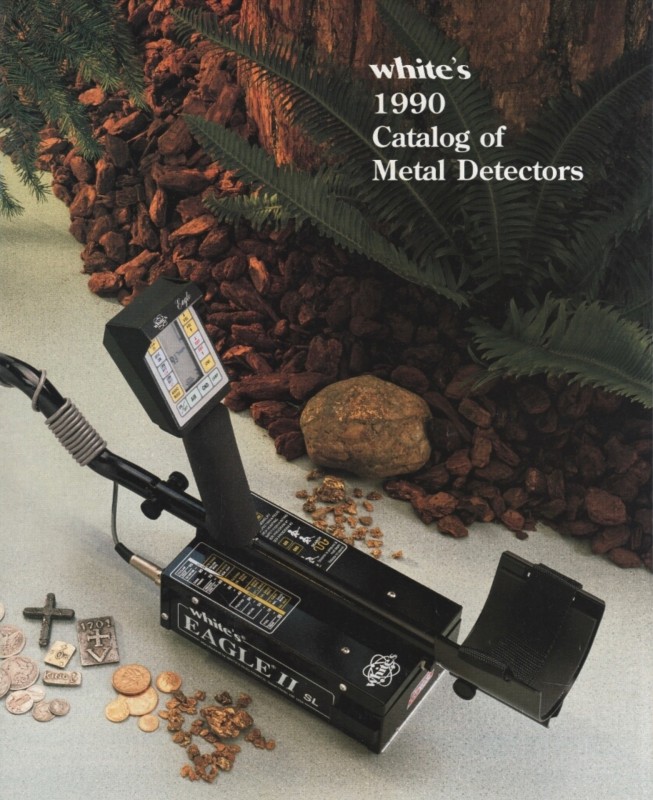
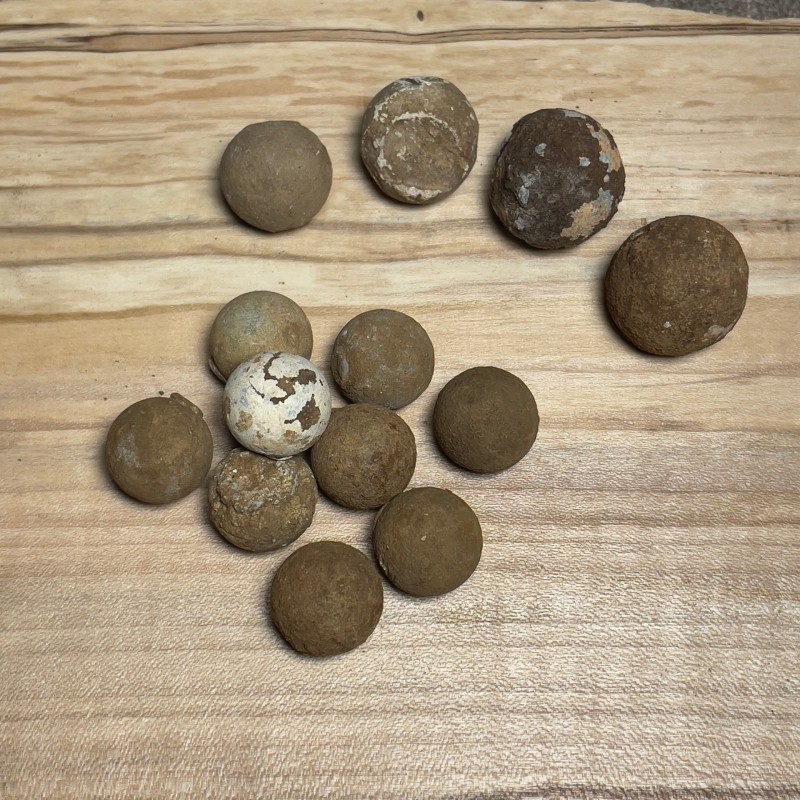


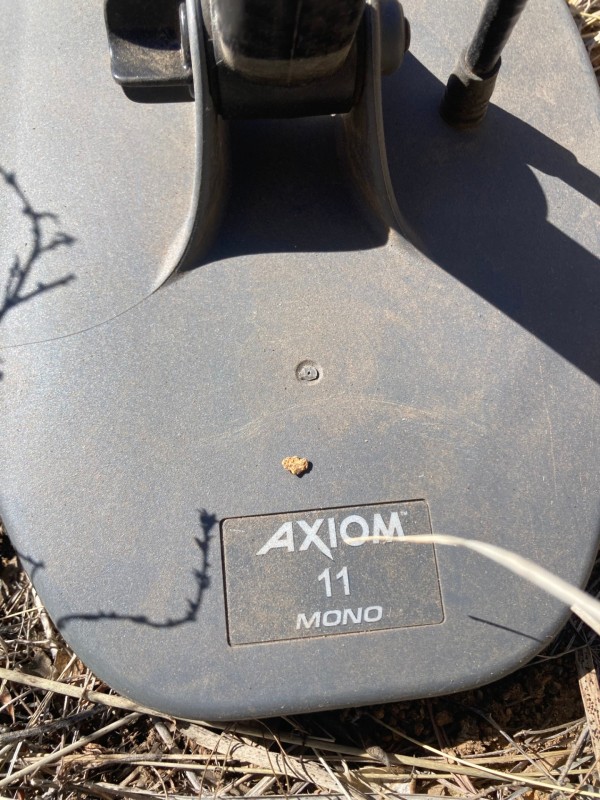
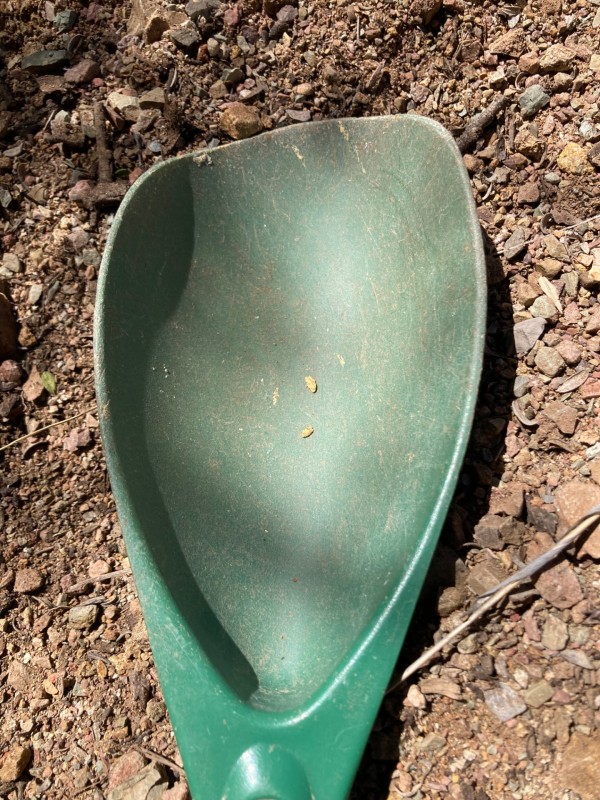
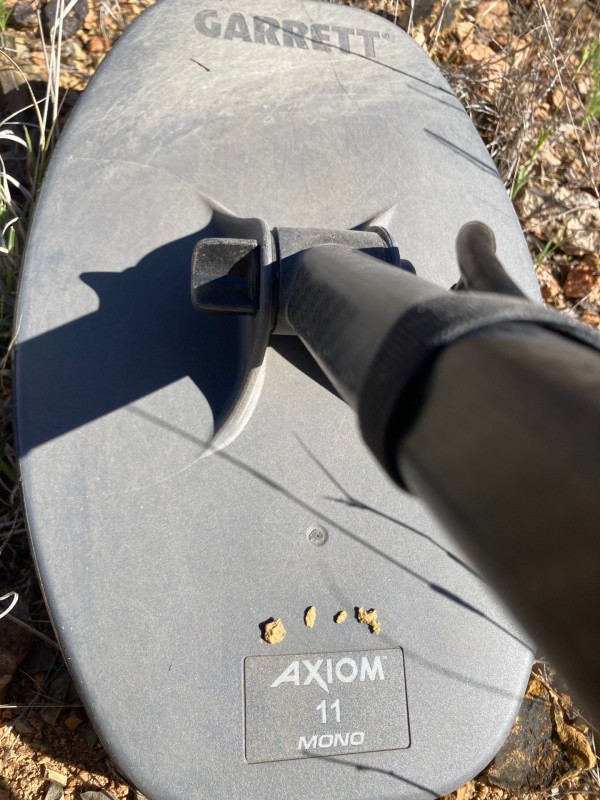
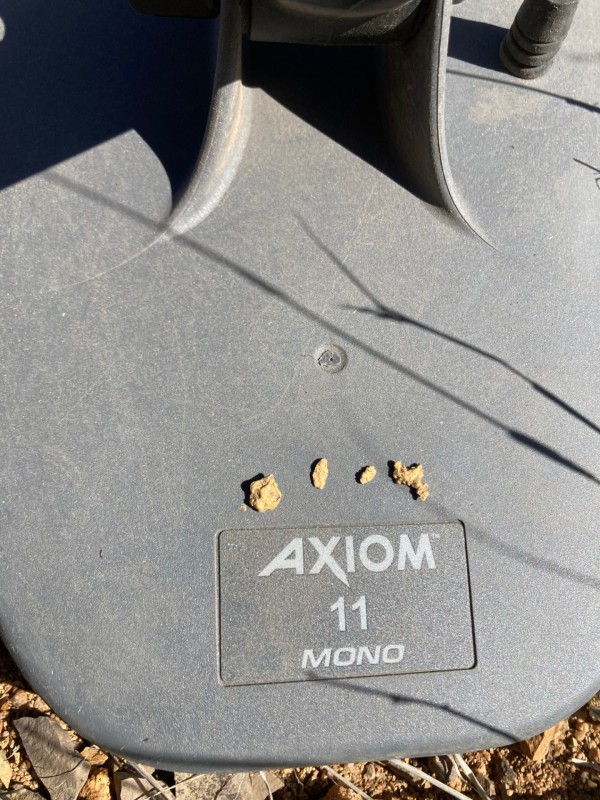

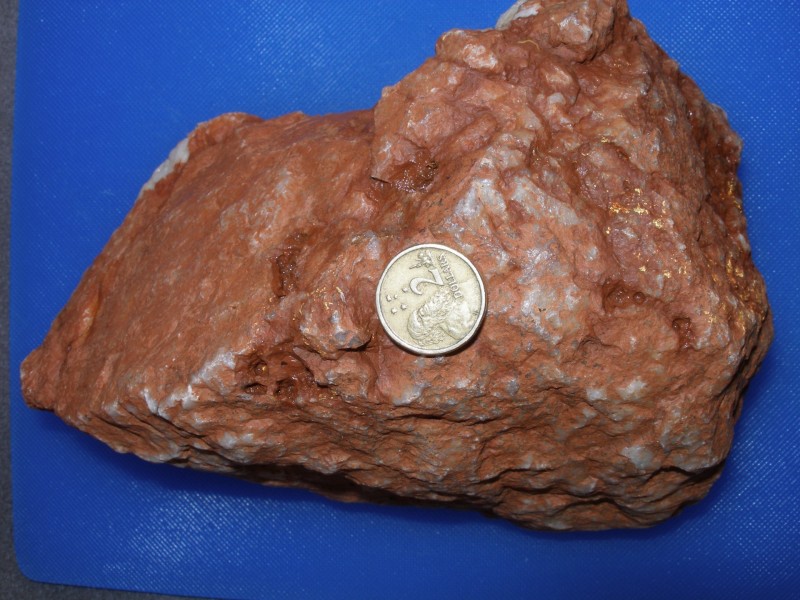

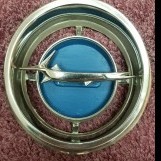


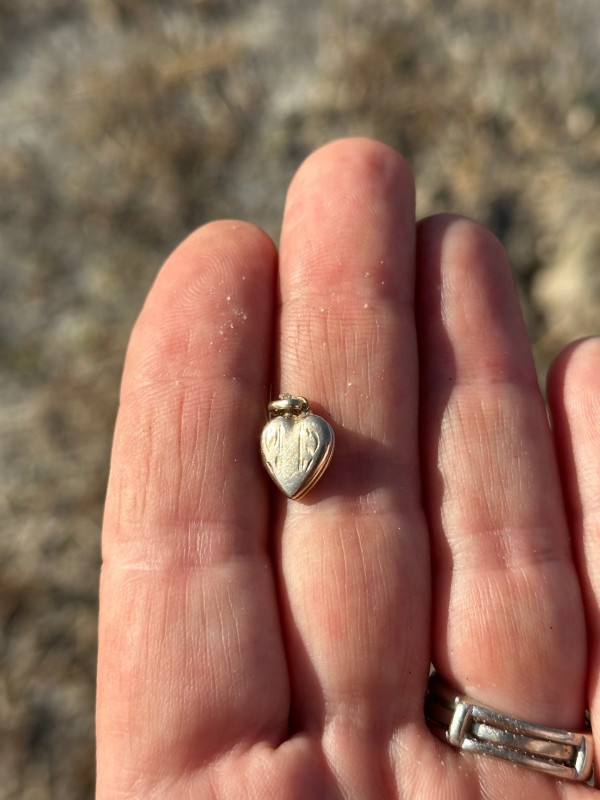
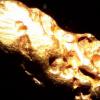

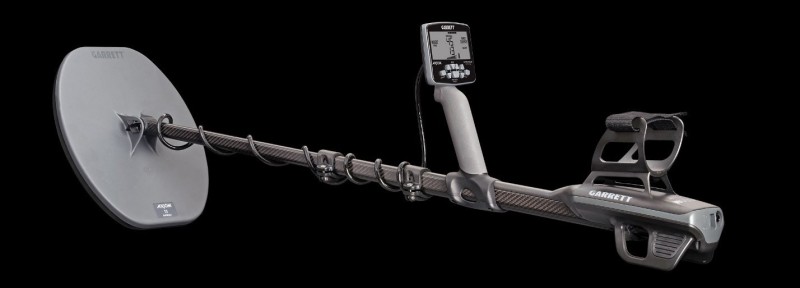
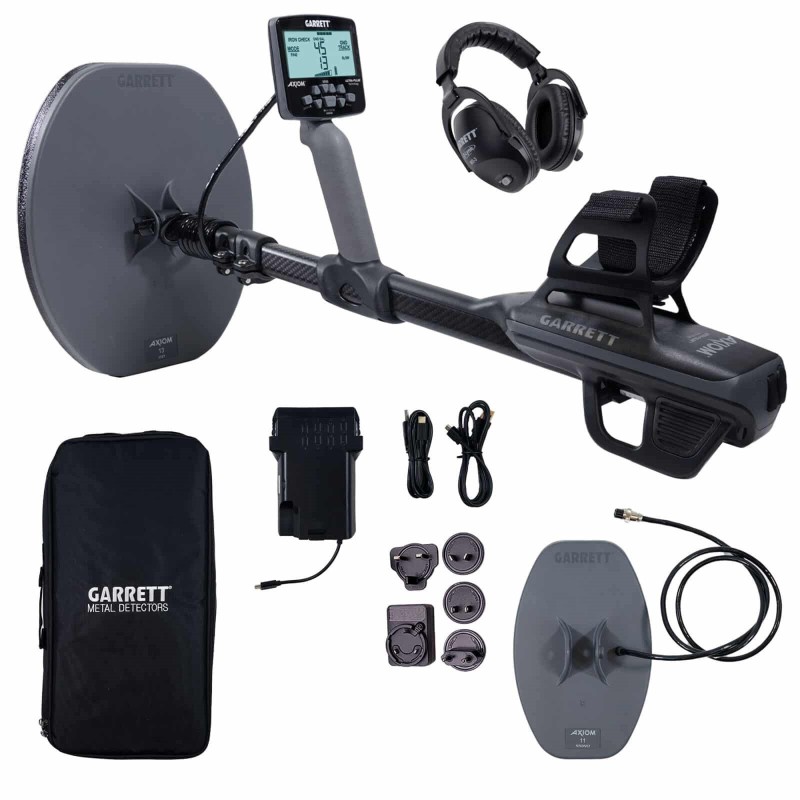
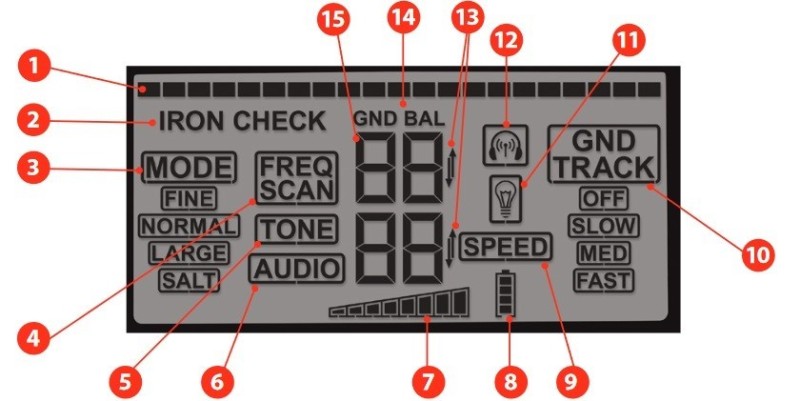
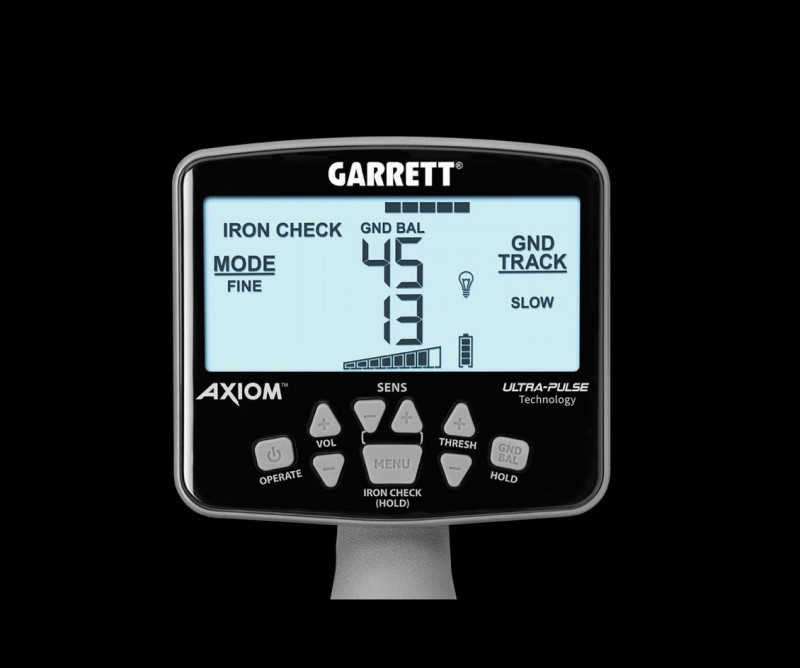
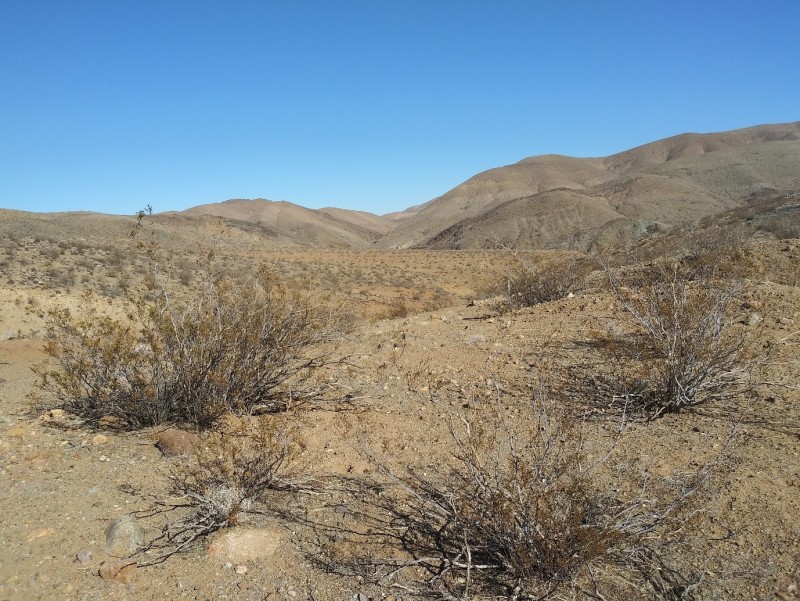
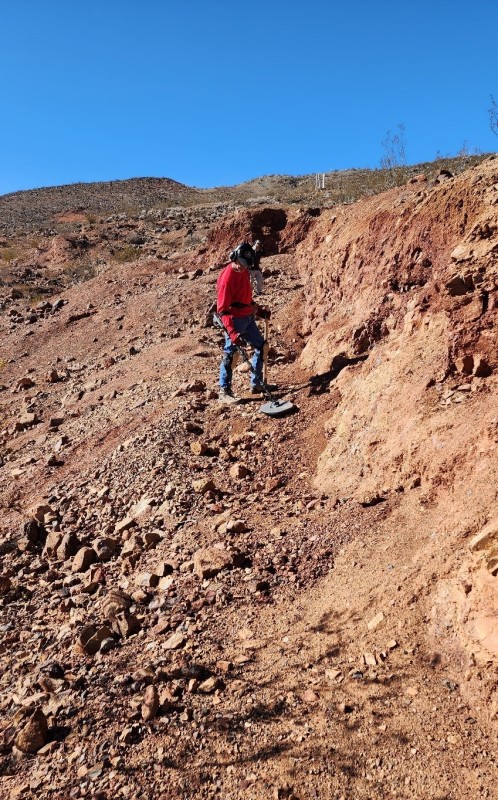
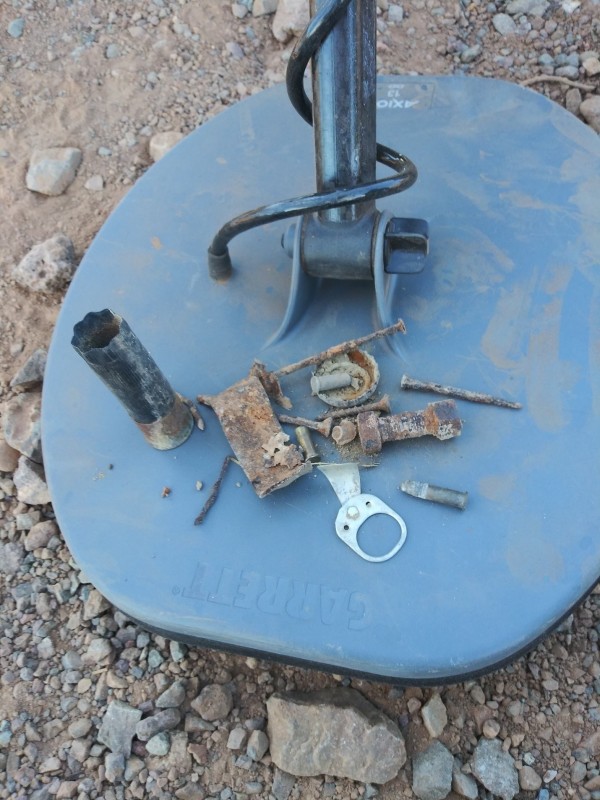
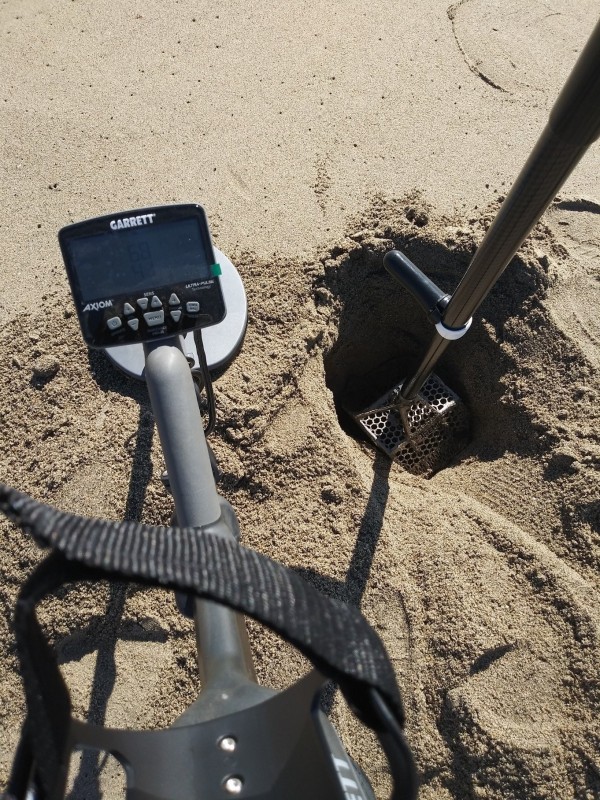
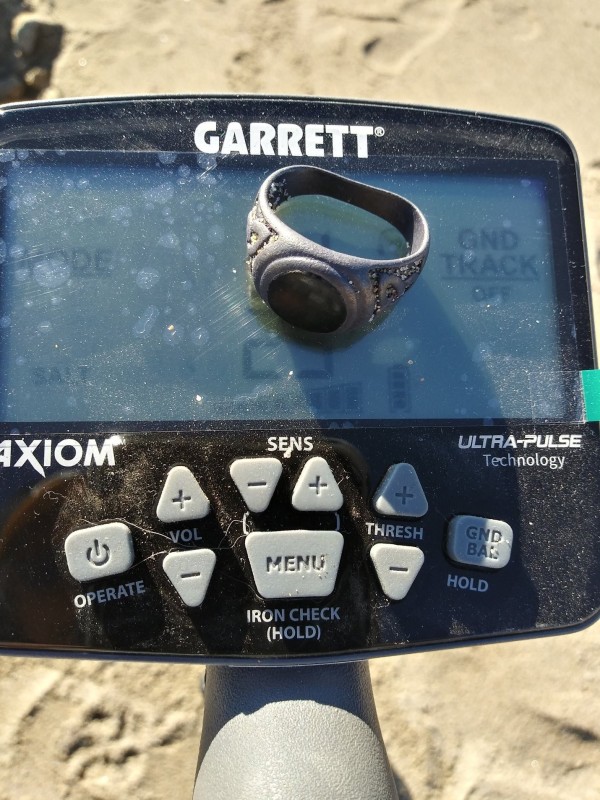
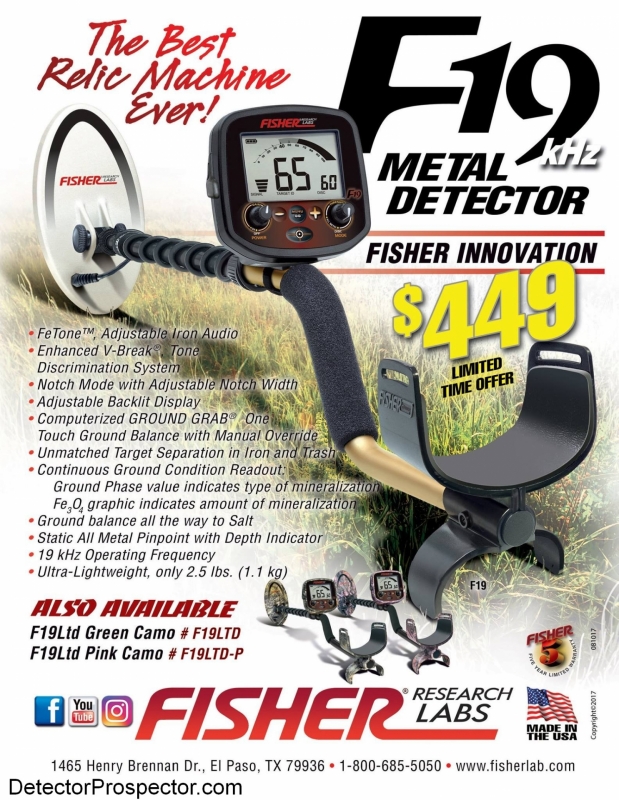
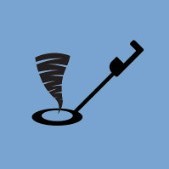
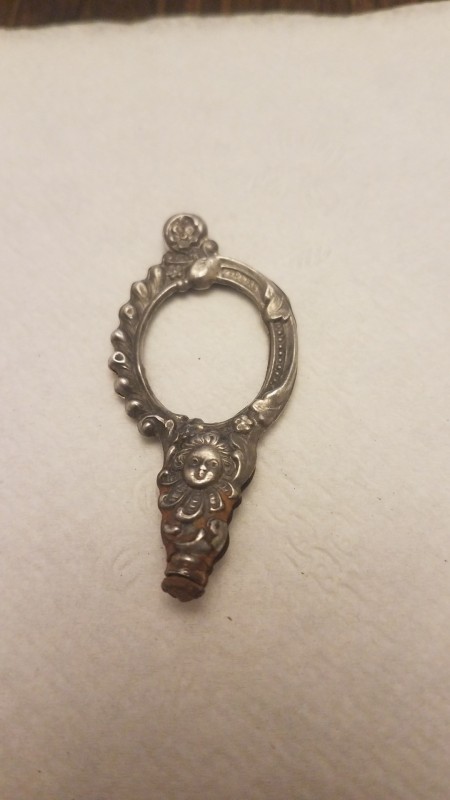
.thumb.jpg.95344db3aeef0a4c6c73420daa366191.jpg)



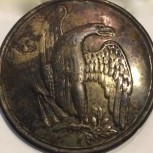
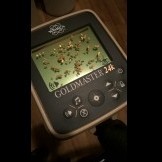
.thumb.jpg.77e4cb5bf39d44bdd2050d2edb7dfdb1.jpg)
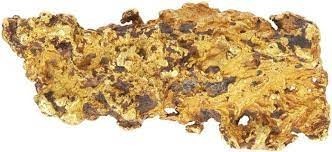
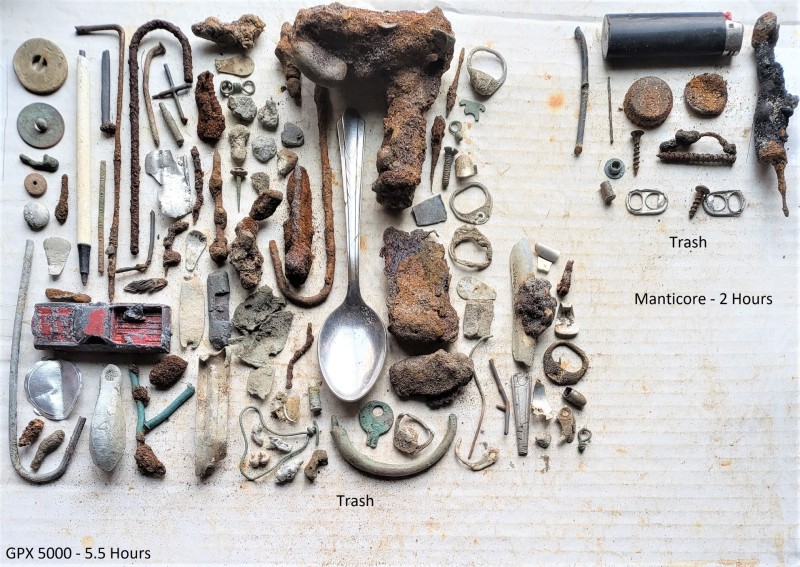
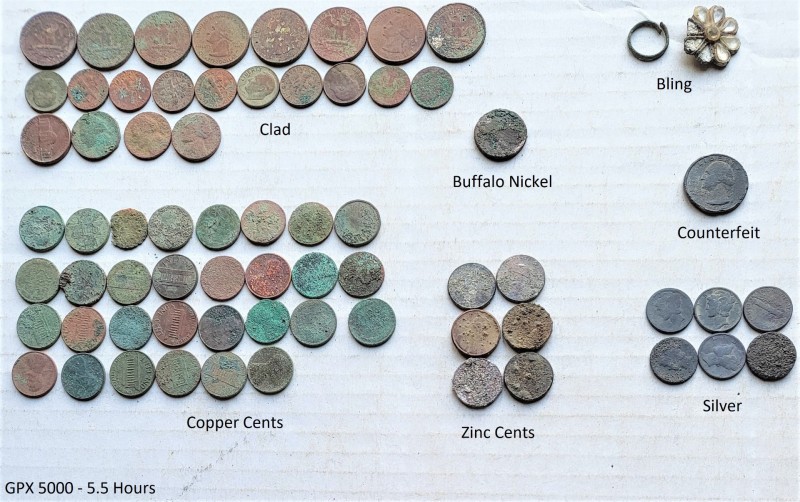
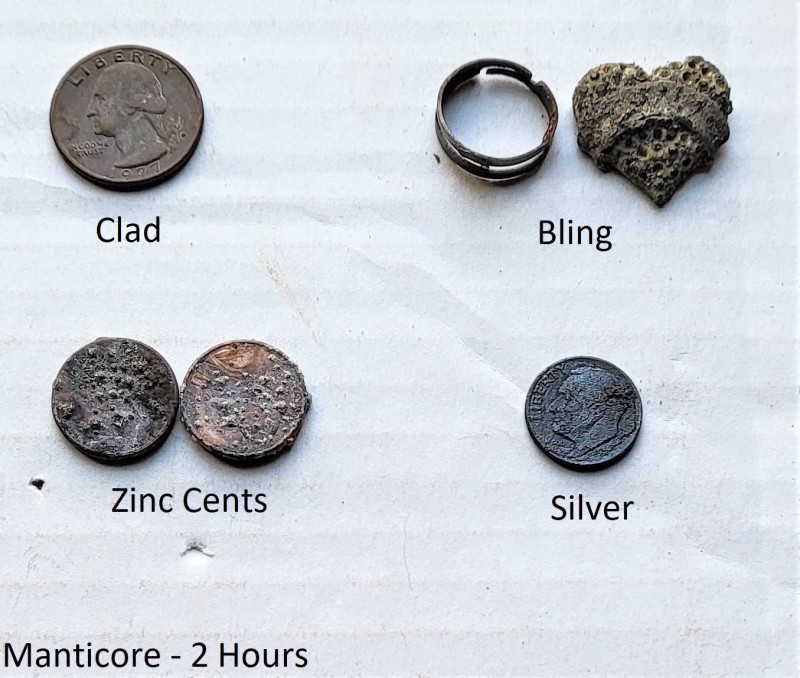
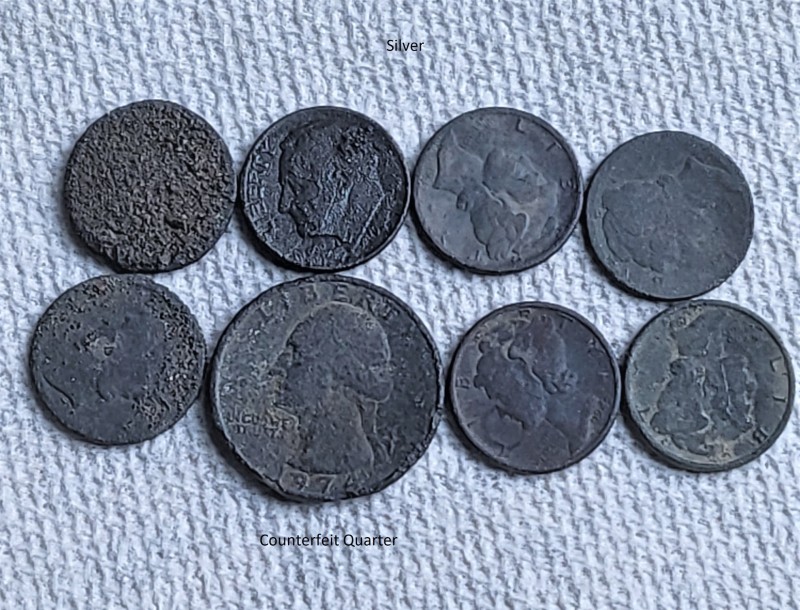
.thumb.jpg.848b1d0bd53e1448d0bd2667823b18d7.jpg)

